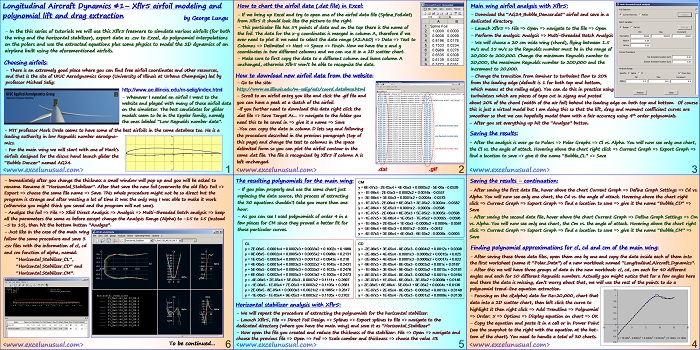In the previous section, the main wing airfoil and the horizontal stabilizer airfoil were simulated using Xflr5. The three coefficients, lift, drag and moment were then interpolated on charts in Excel using 4th and 5th order polynomials. This section shows a few tricks about how to easily introduce those 60 equations as spreadsheet formulas in Excel ranges. It also presents a simple linear interpolation method across the Reynolds… Read More... "Longitudinal Aircraft Dynamics #2 – 2D polynomial interpolation of parameters cl, cd and cm"




